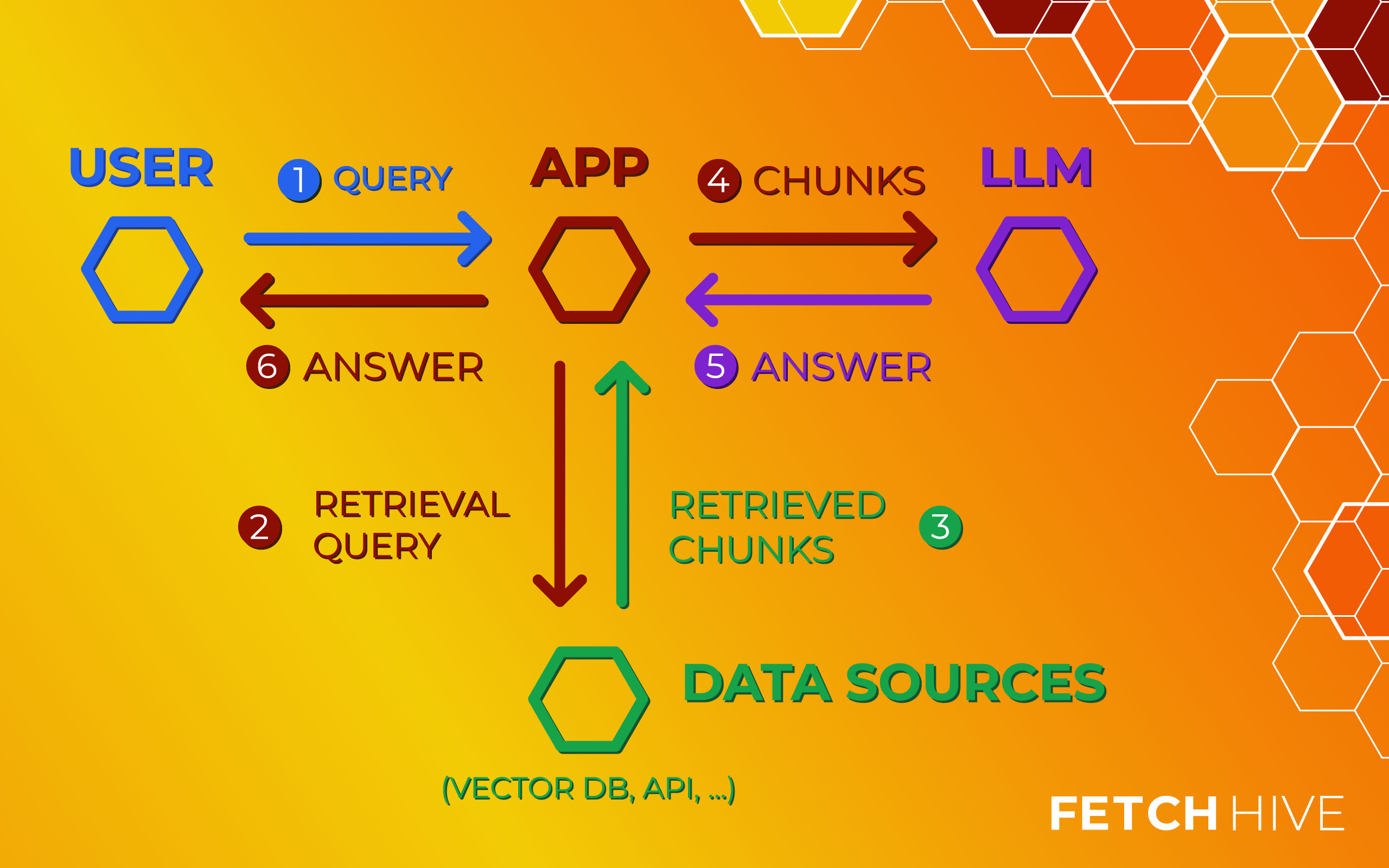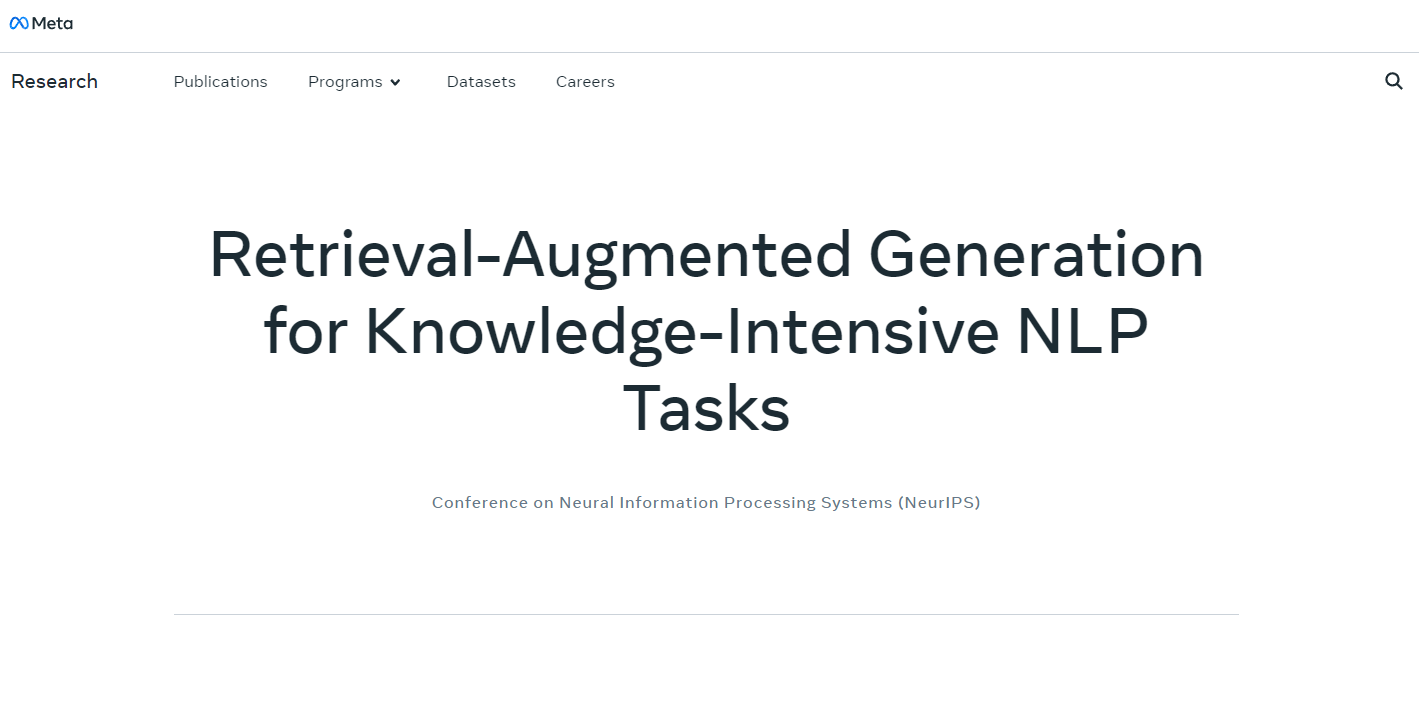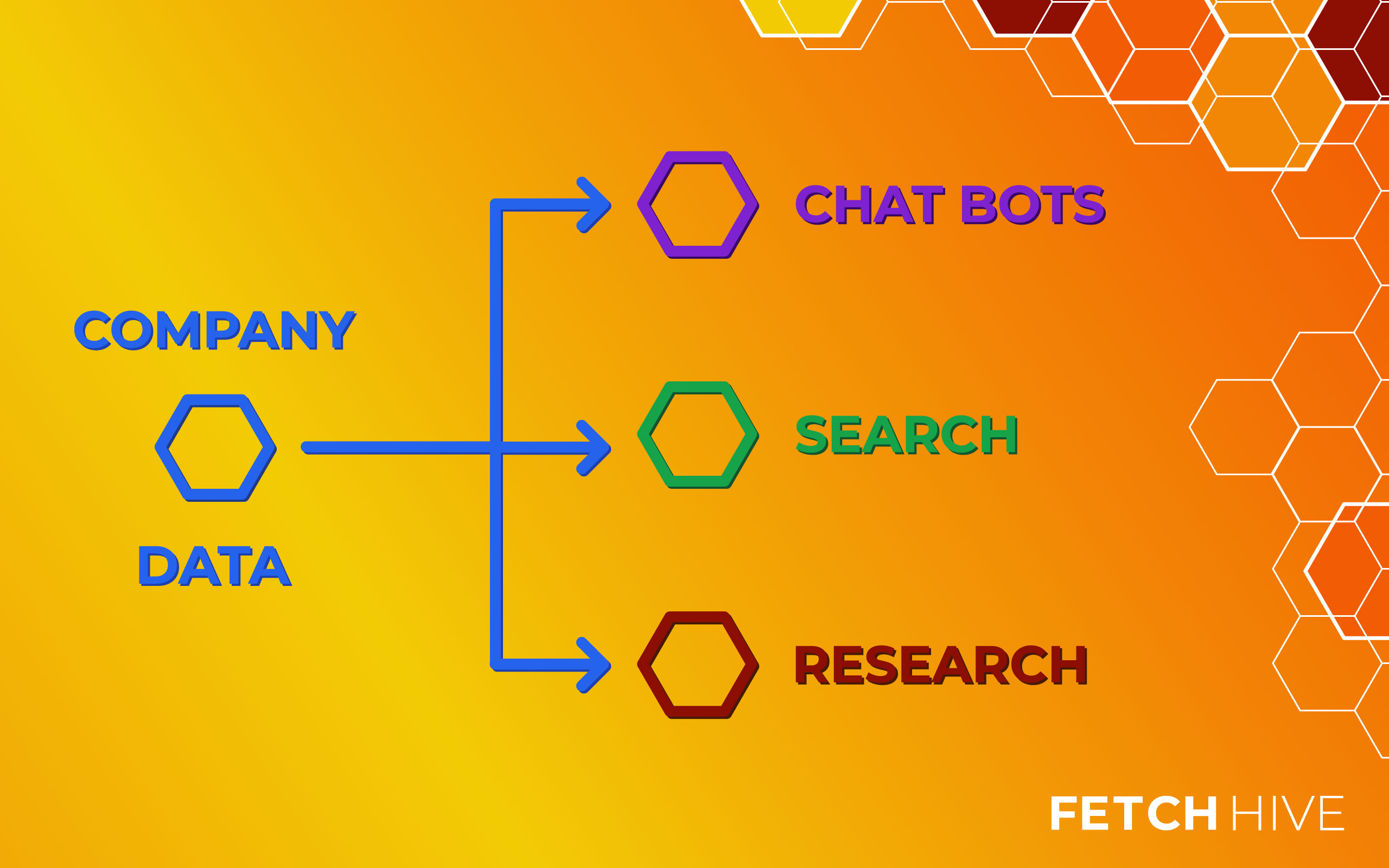I'm Tom, the founder of Fetch Hive. I help startups and small businesses use AI to work smarter and faster without all of the headaches that normally come with AI tools. My clients save time and get better results by using AI for tasks like research, writing content, and business development.
In this guide, you'll learn what RAG is, how it works, and how you can use it in your own business in simple terms. You'll even learn how to implement your own RAG system rather quickly.
Bottom line: This guide will teach you how to actually use RAG to your advantage in a real-world setting rather than just throwing technical terms at you.
I've seen firsthand how retrieval-augmented generation can drastically improve customer support, decision making, product recommendations, and web content while reducing costs and speeding up processes. It's a major advantage if you know how to use it correctly.
Here's what you'll learn about today in plain terms:
- How RAG works
- The advantages of it
- The basics of vector databases
- How RAG works with large language models
- The future of generative AI for businesses
- Real-world use cases for retrieval-augmented generation
- Some of the challenges it presents and solves
What is Retrieval-Augmented Generation And How Does it Work?
Instead of an “off-the-shelf” LLM tha's trained on public data like the internet, your business can now have an AI tool trained on your own proprietary data. I mean all of it: Chat logs, PDFs, emails, social media posts, customer service guides, web pages, research documents and all other types of source documents.
This access to external data sources improves accuracy, enhances customer service, and reduces those hysterical AI hallucinations that we all love.
In other words, using RAG saves you from dealing with all the headaches of LLMs like the knowledge cutoff data, manually entering training data, and generic responses because it uses a vast dataset like the entire internet rather than relevant documents for your company.
A quick real-world example of RAG's effect on a business is using it with chatbots to improve customer service. Imagine you asked a chatbot “hey, my package never arrived. What's going on here?”. A typical AI response would be “your order shipped on [date]. Please check the order status in your account”.
Great, thanks. Time to smash my keyboard and curse technology for eternity.

But with RAG, that chatbot has access to up-to-date information (and even customer data) and could respond by saying “Sorry, Tom. Your order ended up in Norway somehow. It should arrive within 2 weeks and your tracking number is 12345”.
Thanks. Crisis averted.

We all know that generative AI tools like Chat-GPT are great, but they have some clear limitations for your business like:
- Outdated information
- They don't know S*** about your customers
- They don't get context or nuance at all
- It's hard to scale, since it's expensive and time-consuming to manually update training data
RAG solves that by connecting your gen AI tools to external data sources like company documentation, the internet, customer data, or market research, so that their responses better serve the user.
How Does Retrieval-Augmented Generation Work?
Retrieval-augmented generation works by combining AI's ability to search and understand information (“retrieval”) and its ability to generate human-like responses (“generation”).
Here's how RAG works in a simple step-by-step list:
- The user asks a question: You start by asking a question or making a request. This could be something simple like “why is my package in Scandinavia instead of New York?” or “please analyze my sales data from last year and tell me what my most popular products were”.
- The system retrieves the most relevant information: Here's where the magic happens. Instead of relying on outdated, pre-trained knowledge, the system now scans external information sources like websites, company docs, or user data to retrieve the most relevant information.
- Augmentation: The system now takes this new data and combines it with its “existing knowledge” to augment its response to better fit the user's query.
- Generation: The tool takes that data and combines it with its natural language processing abilities to generate a human-like response to the query.
- The system delivers a response: Your gen AI rag tool can now deliver a response that's up-to-date, accurate, helpful, and readable by a human.
I don't want to bore you with the overly technical BS here, but it's important to know the term vector database here. Vector databases are a type of database that stores and organizes data as vectors, which are essentially lists of numbers that represent complex objects such as text, images, or audio.
Why is this important? Well, it really isn't. But in case you're curious, AI processes data by using mathematical representations called vectors. Each sentence or word is broken down into a numerical code that AI can read. Similar concepts have similar vectors. For example, the word money has a similar vector to the word cash, because they are related concepts.
When you make a query, AI breaks it down into vectors and performs a similarity search in vector databases to find the most relevant information.

What Are The Benefits of RAG For Businesses?
Up to Date And Accurate Information
RAG can transform your entire business by giving your AI tools the ability to retrieve information in real time. This information can be used to update systems, provide better responses to customers, and give employees access to the latest information to improve decision making.
Imagine you’re a business in a fast-paced industry like tech. Think of how big of an advantage it would be to have the latest information at your fingertips. You’d have all the latest customer feedback, company sales numbers, industry developments, and regulations.
At the very least, your AI tools won’t hallucinate and just make S*** up whenever it’s feeling moody.
Improving Enterprise Search
Massive corporations are currently leveraging RAG to improve their internal search engine databases so they can better serve customers and employees.
Once a large language model has access to external knowledge like company policies, it can answer questions with context-specific, relevant responses.
For example, your employee could use your generative AI tool to ask “hey, do I get paid time off if I’m going on vacation?”.
A typical large language model would say “yo, bro. I have no clue what your company policy is. Check with them”. A generative AI RAG model would say “no, you get no time off. This isn’t a charity”.
Enhanced Contextual Awareness
One of the biggest benefits of RAG for businesses is its ability to give a contextual response that provides the most up to date data along with added context for the user. This is something that traditional AI or search engines struggle to do.
For example, say you’re a doctor treating a patient with diabetes and kidney issues. With typical generative AI models, you’ll get a generic response based on old information and without patient-specific context.
With RAG, you’ll get a response with the most recent research, treatment options, and contextual information specifically for the patient with diabetes and kidney issues.
Something simpler could be a customer having trouble connecting to wifi. A typical AI model might just say “try restarting your router” or “check the FAQ section on troubleshooting”. With RAG, the agent can understand the FAQ section, explore new patches, take in recent company data, and provide a step-by-step guide to getting connected to the network.
Reduced Hallucinations
AI loves to make things up or say hilariously nonsensical things like “giraffes are NOT real. They are just a fairy tale”.
Whether giraffes are real or not is beyond the scope of this article, but when you use RAG, you drastically reduce the instances of hallucinations in AI.

This is because your AI now has source data that’s as up to date as possible. And if you’re using enough relevant data, it’ll have access to enough data points to make a correct statement.
What Are Some Real-World Examples of RAG?
I want to show you a few examples of RAG from well-known companies so that you can see for yourself just how beneficial it is.
RAG is really not that difficult to implement at all, and once you do, you'll notice some incredible benefits right away.
Here are a few examples of companies using RAG to improve customer service, enhance internal processes, and reduce computational and financial costs:
Facebook (Meta)
It's hard to say exactly how Facebook uses RAG in their daily processes, but they played a major role in introducing it to the world.
Back in 2020, Facebook AI Research published a paper on using retrieval-augmented generation for knowledge intensive tasks where they described how RAG frameworks could better answer a user query than traditional AI models.
In this paper, they detailed how using RAG allows us to skip the training process and allows AI to make sense of unstructured data after a query or keyword search.

Algo Communications
Algo Communications is a Canadian company that distributes speakers and intercoms. They implemented RAG to help improve their customer service.
Due to rapid growth, they couldn't train customer service representatives to answer complex customer questions quickly enough.
The solution?
Algo Communications implemented a RAG system trained on customer support chat logs and two years of email history. Now, customer service agents would be able to easily answer customer queries based on previous consumer interactions.
The result?
Within just two months, the customer service reps were easily able to complete customer cases quickly and efficiently. This helped them move on to new cases 67% faster.
Assembly (HR Platform)
Assembly is an HR platform that uses RAG to enhance its intranet service for clients. Their platform integrates with a client's knowledge library and other additional data like organizational knowledge to provide an accurate answer to user queries.
For example, if an employee asks “how many sick days do I get?” or “what's my vacation policy?”, the platform can provide accurate responses because it's trained on company-specific information.
What Are Some Use Cases for RAG?
I've already explained the benefits of RAG and provided some examples, but let me drive this point home by showing you some real-life use cases for RAG that companies are using at the moment.
Improving Chatbots
Pretty much any company that has chatbots is using - or should be using - RAG. If your chat agents are relying solely on pre-trained data from months ago, they will not provide a decent level of customer service. It's just not possible.
Once your chatbots have access to real-time company data, it changes the entire game.
Question Answering Systems
You'll most likely find question answering systems in enterprise search applications. A few companies that use them that come to mind are Accenture, Assembly, and Microsoft.
These companies implement RAG systems that search their knowledge bases in order to improve employee search results and enhance productivity.
Summarizing Documents
RAG is great for summarizing documents and returning concise, value-driven summaries. This is particularly useful with large case studies, research reports, and academic papers that are too dense for normal people to comprehend.

What are the Challenges of RAG Systems?
Before we wrap up, I want to cover some of the challenges of RAG systems, so you can prepare for them when you implement your own retrieval-augmented generation tools into your businesses.
Integration
Integrating RAG into you existing AI systems and workflows is a B****. This isn't a “plug and play” thing we're talking about here. It requires complete customization.
First, you need to link it with your existing knowledge and the right databases. Plus you need to use APIs while still maintaining security, especially if you're working with sensitive data like in healthcare or law.
This is not only time-consuming, it's extremely challenging if you don't know what you're doing.
Scalability
As your data volume grows, it becomes more difficult for your AI system to retrieve data in an efficient way. It's just simple math. Imagine you're the lone employee in a library of 10,000,000 books. It's going to be hard to find the right information in the right book whenever a customer asks for it.
With RAG, it's the same when performing real time data retrieval.
There's a solution though: Efficient indexing and search optimization. You must create efficient indexes for faster retrieval.
Data Quality
Your RAG system is only as good as the data it's trained on. RAG will produce limited results if you train it on irrelevant, outdated, or incomplete information.
To combat this, make sure you use trusted data sources and perform regular maintenance on data to keep it up to date.
How to Implement Your Own RAG System
One last thing: I want to provide a step-by-step tutorial on how to implement your own RAG system so you can get started on it today.
1. Choose Your LLM
To get started, choose an LLM that's capable of generating a text response. Most people use Chat-GPT 4 or Hugging Face.
2. Set up External Data Sources
This is where you choose the data that your system will be trained on. It could be company data, pre-existing databases, or web scraping (that scours the web for relevant data and constantly updates at all times).
3. Vectorize Your Data
Convert your external data into vectors (numerical representations) that allow for similarity search. Use an embedding model like Sentence-BERT (SBERT) or Faiss to transform text into vectors. If your data sources contain unstructured data (e.g., text documents or web pages), you need to preprocess and convert it into vectors for efficient search.
4. Implement The Information Retrieval Component
The retrieval component of your RAG system is responsible for searching and fetching the most relevant data based on the query. Use your vector database to perform approximate nearest neighbor (ANN) searches. When a query is made, the system will search the vector space for the closest matching documents based on vector similarity.
A good example of this is if the user searches “latest AI advancements”, the system retrieves documents from your vector database to generate a relevant response.
5. Integrate Retrieval with Generation
Now, combine the retrieved information with your text generation model. The language model uses the data to generate a relevant answer. This is where the system combines the model's pre-trained knowledge with the new, specific data fetched from your external sources.
That's it!
Now, when the user prompts the system with a basic query, your model can return a detailed, relevant answer.

Conclusion: Generative Retrieval-Augmentation is The Future
AI RAG is the next step in artificial intelligence that's going to completely change the way we find information, train employees, and serve customers.
It has so many benefits over traditional search, especially when the humans using it understand prompt engineering.
Companies that adopt it are going to reduce costs, improve results, and offer better products and services to their customers. Ones that don't will be left behind.
I hope this guide to retrieval-augmented generation was helpful and simple to understand.
Retrieval Augmented Generation FAQs
Q. What's the difference between RAG and semantic search?
A: The difference between semantic search and RAG is that semantic search attempts to understand the meaning behind words rather than just matching keywords with semantically relevant passages or articles, but RAG goes a step beyond that and finds relevant external sources of information and uses a text generator to deliver textual, relevant responses.
Q. How can I build RAG workflows?
A: The best way to build RAG workflows is to use a tool that speeds up workflow development and includes everything you need in one place like databases, iteration tools, and built-in feedback mechanism.
Q. What is retrieval-augmented generation in generative AI?
A: Retrieval-augmented generation in generative AI is an AI technique where a system relies on an external data source to gain a deep understanding of a topic, and combines that with a generative AI tool like Chat-GPT to produce generated responses that are human-like and relevant. A user puts in an initial prompt, the system consults its training data to find the most relevant data, and then generates an answer with contextual information.
Q. What is an augmented prompt?
A: An augmented prompt is a prompt that has added information that the AI wouldn't normally have access to like constraints (e.g, write only 200 words in a casual tone) or supplementary context (e.g, focus on the impact of (factor) for (audience)).

